Jack Radecki, Supervisor of Arbor Services for the Mount Pleasant Group of Cemeteries, led the tour of the cemetery, which is considered one of the finest arboretums in North America. If you’ve never been there, I highly recommend a visit to this calm, shady oasis in the middle of the city. Unlike the city as a whole, which has about 20 per cent canopy cover, Mount Pleasant cemetery boasts 60 per cent canopy cover! And while it may not be your first thought when you hear the word “cemetery”, Jack told us that the grounds offer a gentle microclimate. He has collected a huge variety of species from all over the world here -- it’s like a tree museum!
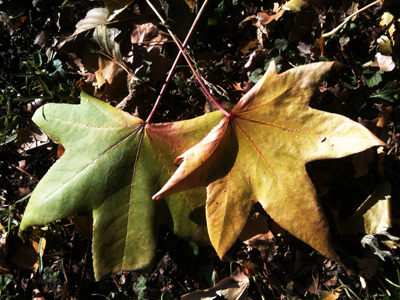
There’s a sweetgum (Liquidambar styraciflua), which normally doesn’t grow this far north, but it seems perfectly happy here!
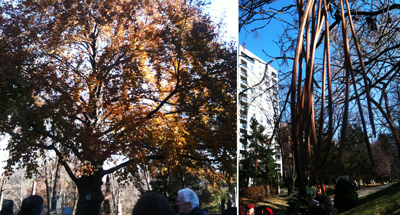
We also found this amazing copper beech (Fagus sylvatica), and a Chinese catalpa (Catalpa ovata) – a tree species I’d never seen before. Chinese catalpas have very skinny pods compared to the northern catalpa (Catalpa speciosa) commonly found around here.
Jack also taught us how to tell spruce, fir and pine trees apart. Although they’re all evergreens and can look similar, there are a few simple things to look for to distinguish among them. Pine needles come in bundles, usually of two, three or five. Spruce and fir needles are carried singly on the twig. Spruce needles are attached to the twig via little woody pegs, whereas fir needles attach directly. Another way to tell them apart is by the cones: pine and spruce cones hang down, while fir cones point up.
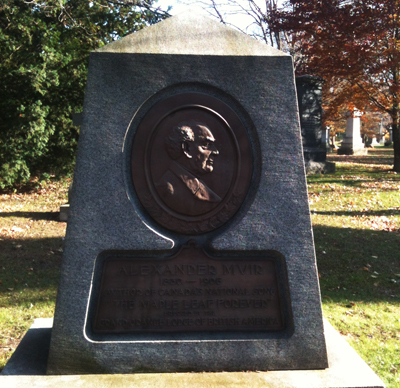
There are a number of famous people buried in Mount Pleasant Cemetery. We saw the graves of Kenneth Thomson, William Lyon Mackenzie King, and H.A. Engelhardt, who designed the cemetery. We also stopped at the grave of Alexander Muir, flanked by a sugar maple on one side and a red maple on the other. Muir wrote “The Maple Leaf Forever,” a song that was Canada’s unofficial national anthem for many years. A participant on the tour surprised us by singing a verse of the song for the group. As I recently organized a LEAF Tree Tour focused on Maple Leaf Forever Tree, it was nice to make this connection.
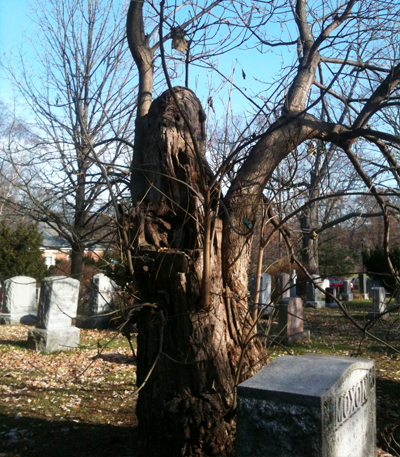
Jack showed us a number of trees that he is helping survive against the odds. A 175-year-old white oak (Quercus alba) used to have a cement wall beside it. Since the wall was removed, the poorly growing tree has made a huge recovery. An old sugar maple which has lost its central leader - or main stem - is held together with an O-ring system: a ring in the middle of the canopy is cabled to each main outer branch.
A large willow, estimated to be 80-90 years old, has a big cavity in its centre due to storm damage, but it has re-sprouted and surpassed the average willow’s lifespan (which is about 70-80 years). There was also a northern catalpa (Catalpa speciosa); its structure has failed several times, leaving it with this funny shape. Many people might think a tree with a hump and a big hole in the middle was finished. However, Jack says since it’s not unsafe, why remove it?
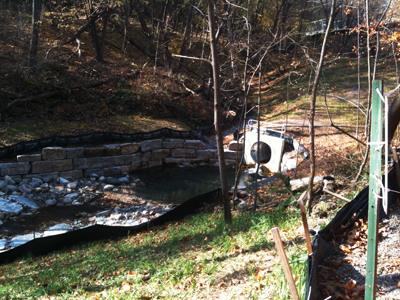
In contrast to the manicured, protected cemetery trees, Moore Park Ravine felt wild and untouched. We were led by Steve Smith, a ravine specialist who has been working in this specific ravine for many years. He was able to share his insights about its management. Steve pointed out that our ravine waterways are usually buried underground in pipes. So while ravines may seem like undisturbed areas of the city, they actually experience frequent disturbances to repair these pipes. As a result, a lot of the growth here is young. There are some older trees in this ravine though, with many around 150 years of age.
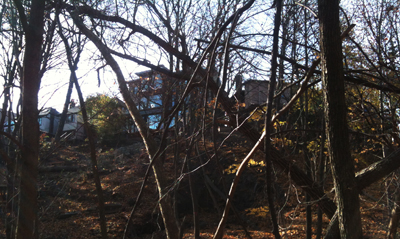
Erosion is a big problem in this ravine, and is of particular concern with the houses built so close to the edge. Not surprisingly, the slope is unstable and landslides are common. This affects both the health of the trees and the structural integrity of the houses.
Invasive species are also a problem in our ravines. We saw quite a lot of Manitoba maple (Acer negundo), buckthorn (Rhamnus cathartica) and dog-strangling vine (Cynanchum rossicum and C. louiseae). Given the frequency of disturbances, both from pipe repair and erosion, it’s no surprise that these opportunistic invasive species are prevalent. In fact, they’re so widespread that Steve feels intentionally planting a diversity of natives in the ravine is necessary to keep these more suitable species around and prevent invasive species from outcompeting them.
Between the cultivated cemetery and the wild ravine, the tree tour was a great way to spend a Saturday morning!
